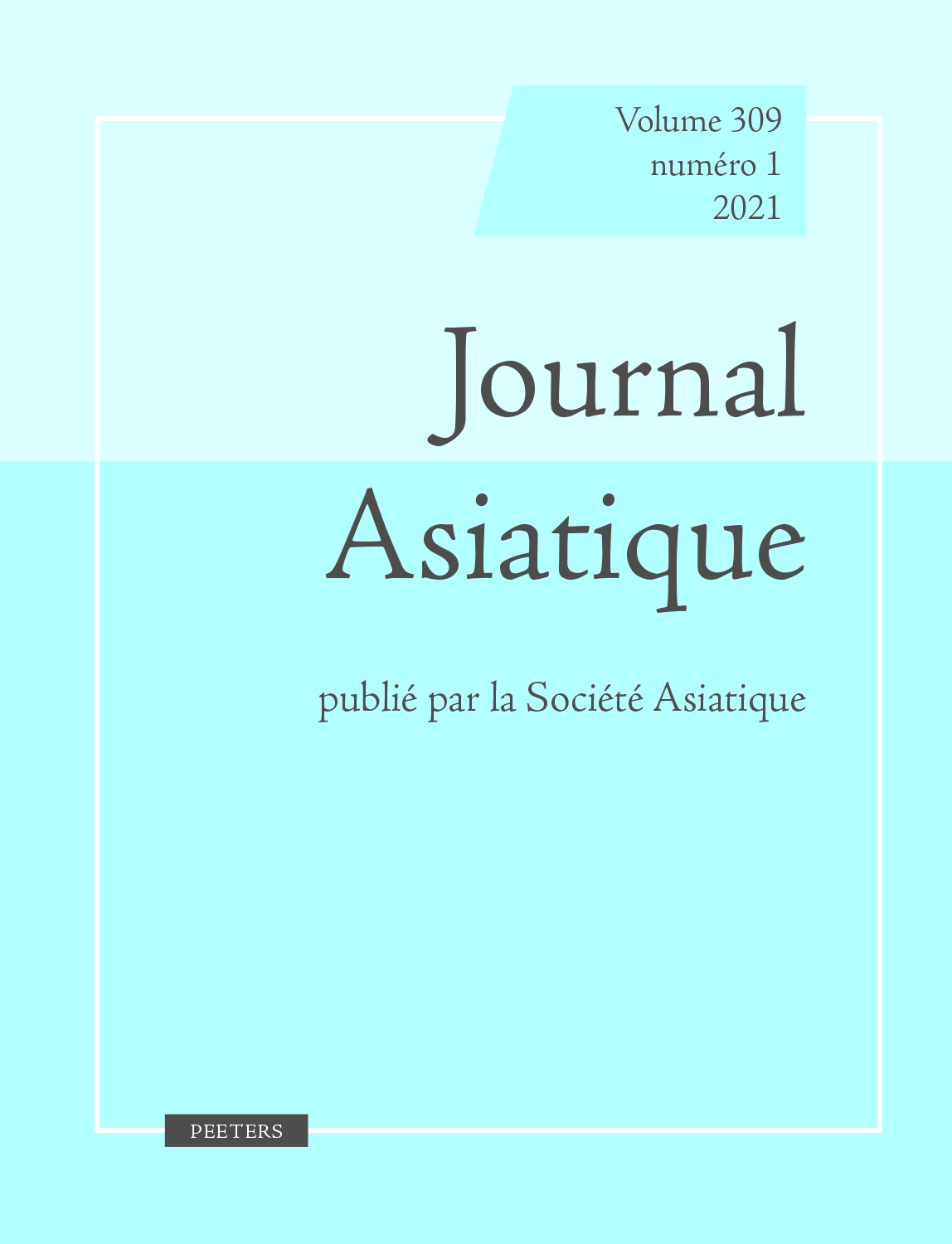 previous article in this issue previous article in this issue | next article in this issue  |

Preview first page |
Document Details : Title: Backside, Bile, Yellow and Brass in Indo-Aryan and Samoyed Author(s): WITCZAK, Krzysztof Tomasz Journal: Journal Asiatique Volume: 310 Issue: 2 Date: 2022 Pages: 221-227 DOI: 10.2143/JA.310.2.3291607 Abstract : The paper discusses prehistoric contacts between Indo-Aryan and Samoyed on the basis of four selected terms denoting ‘backside’, ‘bile’, ‘yellow’ and ‘brass’. The Old Indic terms buliḥ, buriḥ f. ‘backside, anus, vulva’, pittám n. ‘bile’, pīta-, pītaka-, pītala- adj. ‘yellow’ and pittalam n. ‘brass, bells’ demonstrate no obvious cognate words in Iranian and other Indo-European languages. What is more, the Indo-Aryan terms in question are commonly treated as borrowings from an unknown source. A scrupulous analysis of the Indo-European and Uralic lexical material clearly reveals that at least three Indo-Aryan terms should be treated as probable Samoyed borrowings: (1) Skt. buliḥ, buriḥ f. ‘backside, anus, vulva’ ← Early PSam. *puli (< Uralic *pulɨ) ‘backside, buttocks, anus’, hence CSam. *puə̑ ‘backside’, cf. Yur. pū ‘buttocks, ass / Hinterteil, Arsch’, Selk. pu ‘backside’; (2) Ved. pittá- n. ‘bile’ ← Early SSam. *pittå ‘bile’ (< Ur. *piša ‘bile’), cf. Selk. Ket patte, patta, Tas pătɜ, Tym pāt, pāte ‘bile, gall’; Yur. Obdorsk paďe ‘bile, gall’; Yen. Chantaika fóreʔ, Baicha fódeʔ ‘id.’; Tav. fáta ‘id.’; Kam. p̔åda ‘bile, gall’; Koib. poda ‘id.’; Mat. hadì̮de ‘bile’; (3) Skt. pīta-, also pītaka-, pītala- adj. ‘yellow’ ← Early PSam. *pitå ‘yellow, green, bile-coloured’ (< Ur. *piša ‘yellow, green’, originally ‘bile-coloured’), cf. Yur. Obdorsk paďe jilāχā ‘green’, paďerāχā ‘bile-like; bile-coloured; yellow’ (← Yur. paďe ‘bile, gall’); Selk. padə ‘green’, dial. (Tym) patelča- ‘to colour, dye / färben’; Taig. паттанге ‘green’. The present author also discusses the fourth pair of the Indo-Aryan and Samoyed words denoting ‘brass’: (4) Skt. pittala- n. ‘brass, bells’ vs. Early PSam. *pitå-rɜ ‘brass’ (< Ur. *piša ‘id.’), cf. Selk. (Tym) patərkä ‘brass / Messing’ (cf. Selk. Tym pāt, pāte ‘bile’, patelča- ‘to dye / färben’). Note also Mordv. (Moksha) piža ‘copper, brass / Kupfer, Messing’, (Erza) piže ‘id.’ (< ‘green, blue’). It is ultimately suggested that the Indo-Aryan terms for ‘brass’ should be treated as a separate innovation, created on the basis of two borrowings indicated earlier (see No. 2 and No. 3), rather than a fourth item of Samoyed origin. |
|


